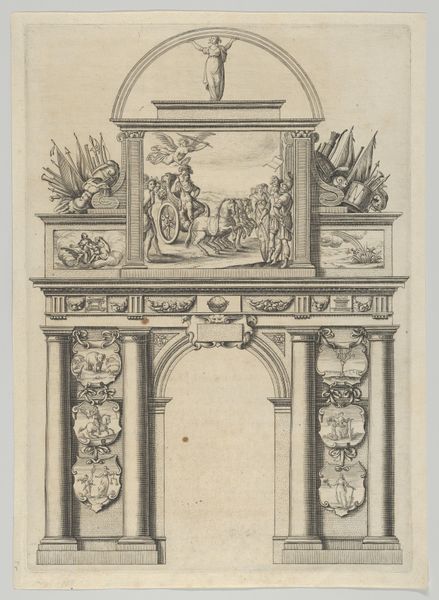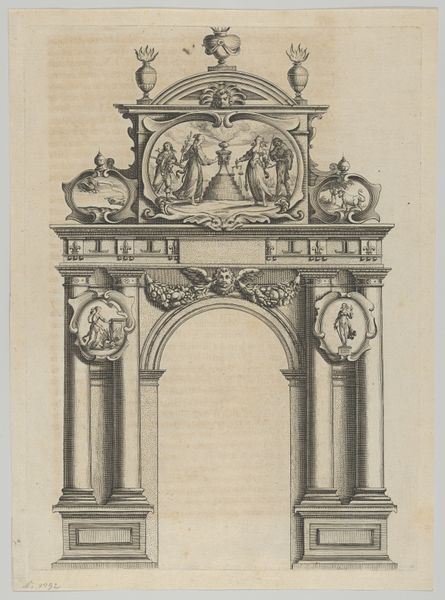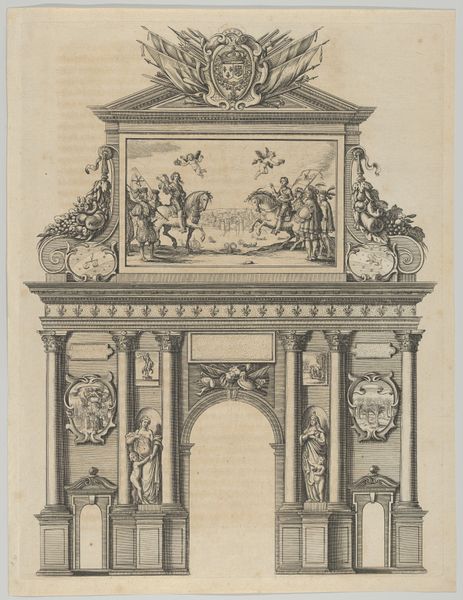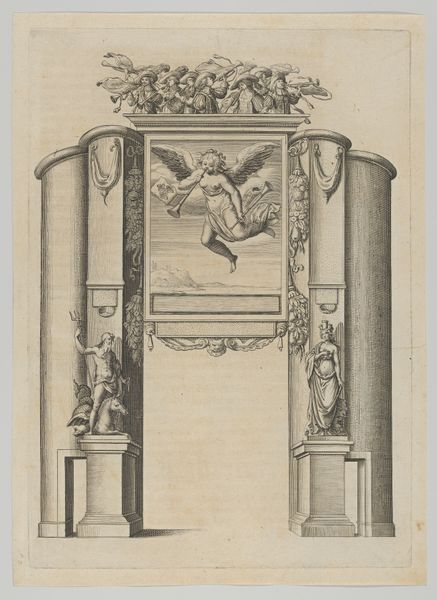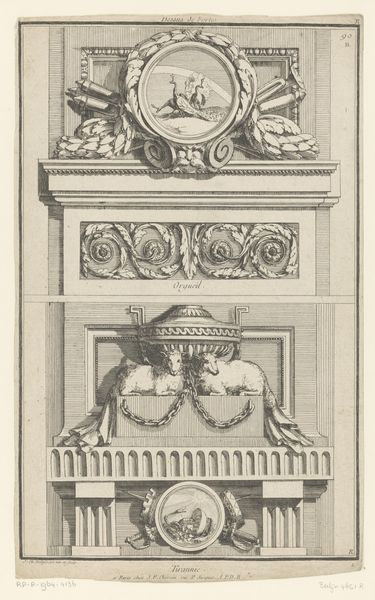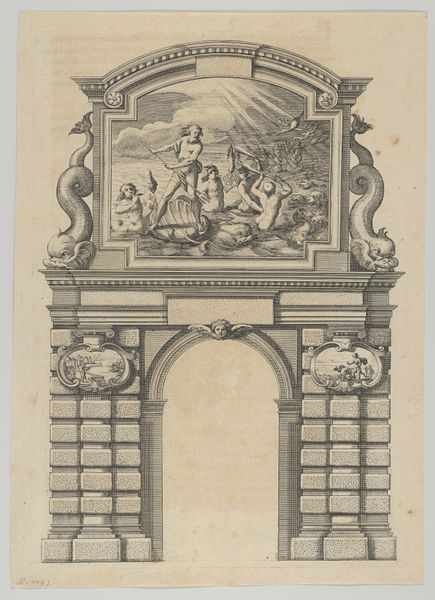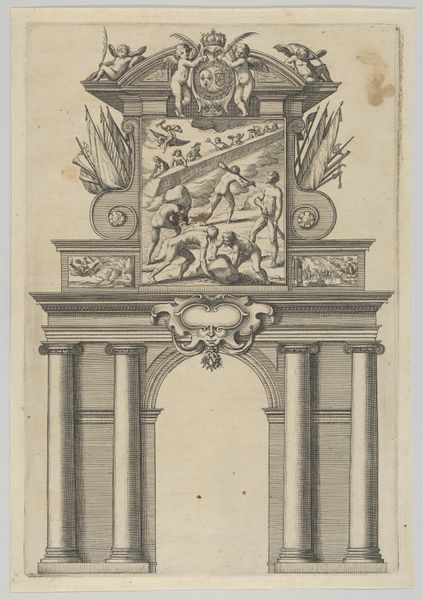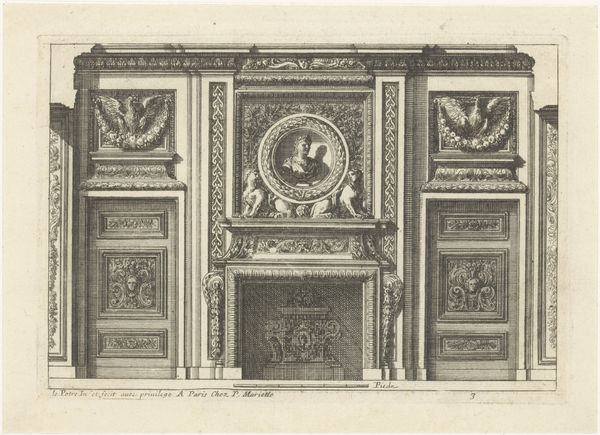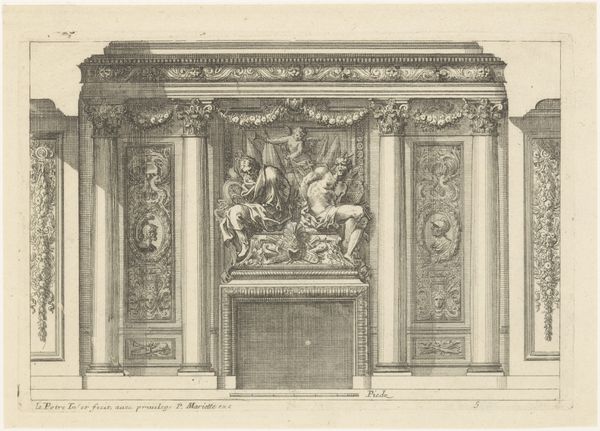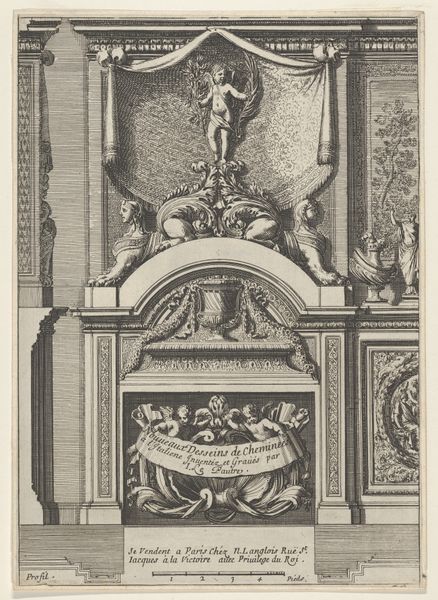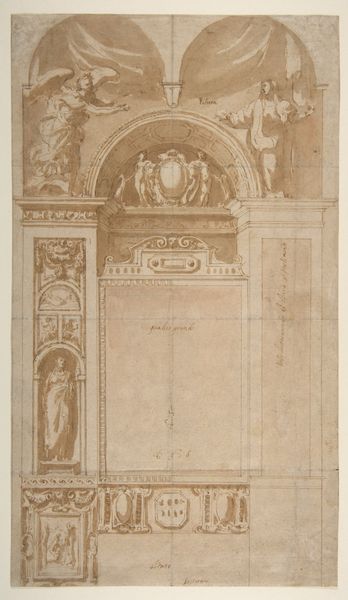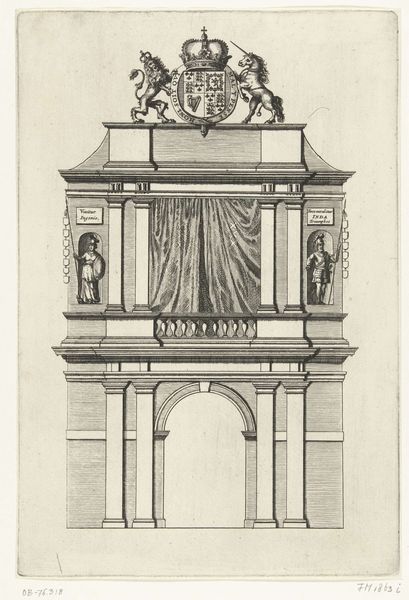
Triumphal arch, from 'Éloges et discours sur la triomphante réception du Roy en sa ville de Paris ...' by Jean-Baptiste de Machault 1629
0:00
0:00
drawing, print, engraving, architecture
#
drawing
#
allegory
#
baroque
# print
#
old engraving style
#
form
#
arch
#
line
#
history-painting
#
engraving
#
architecture
Dimensions: Sheet: 11 3/4 × 8 9/16 in. (29.8 × 21.7 cm) Plate: 11 1/8 × 7 15/16 in. (28.2 × 20.1 cm)
Copyright: Public Domain
Curator: Editor: Here we have a print from 1629, "Triumphal Arch," created by Melchior Tavernier. It's an engraving depicting a grand archway, and the sheer detail achieved with such fine lines is incredible. What can you tell me about it? Curator: Considering Tavernier's socio-economic position as a leading printmaker, we can interpret this image, not just as an architectural drawing, but as a form of advertisement, showcasing his mastery of the medium and his capacity to reproduce images for the ruling elite. The intricate detail and precision suggest a significant investment of time and labor, implying value. Editor: That's interesting, so you see it as a demonstration of skill. It's function over pure aesthetics? How was this image practically made back then? Curator: Precisely. Think about the tools involved, the copperplate, the acid etching, the press, the ink – these are all commodities. Tavernier and his workshop had access to materials and specialized knowledge, that many people couldn’t obtain. Therefore, the image’s production value transcends its mere symbolic meaning. Was the King’s reception truly triumphant, or was Tavernier triumphantly mastering his craft and the tools? Editor: That is a helpful perspective. Viewing art this way moves it away from the romantic ideal and closer to the actual business of creation. Curator: Exactly. Considering art through a materialist lens demystifies the process, forcing us to confront the means of production. It makes one wonder about the working conditions within Tavernier's workshop and what kind of apprenticeship system created such expertise. Editor: Thank you; this emphasis on the practical considerations behind the image has greatly enriched my understanding of it!
Comments
No comments
Be the first to comment and join the conversation on the ultimate creative platform.

